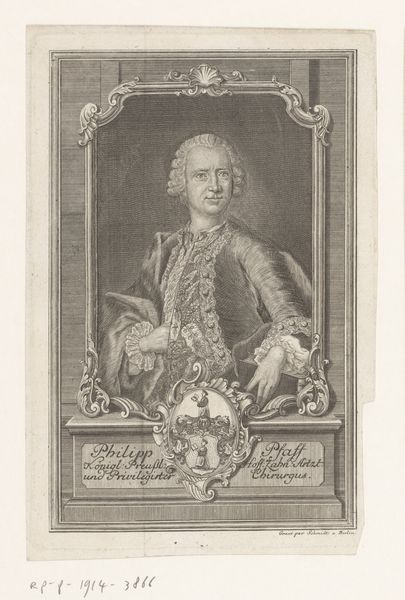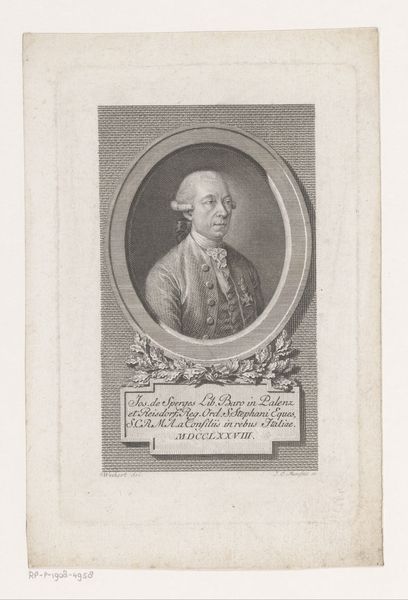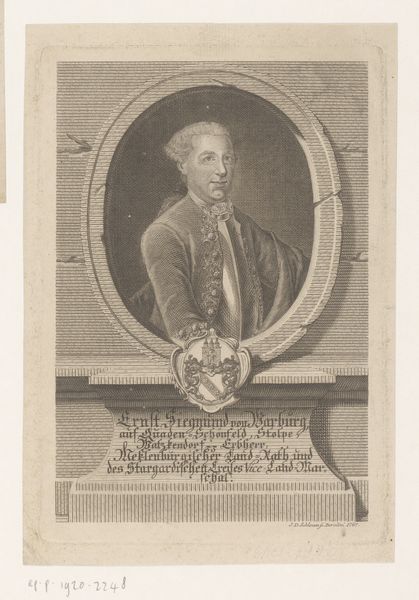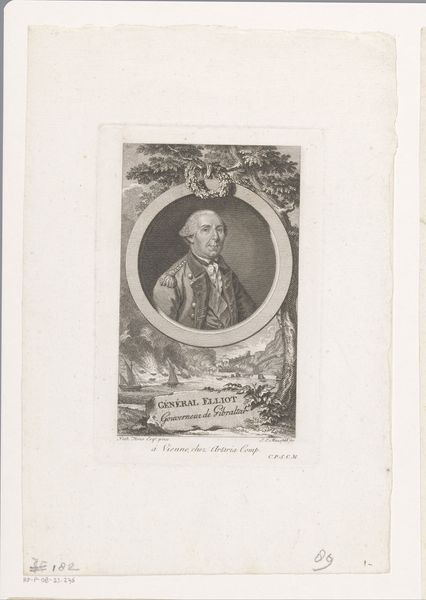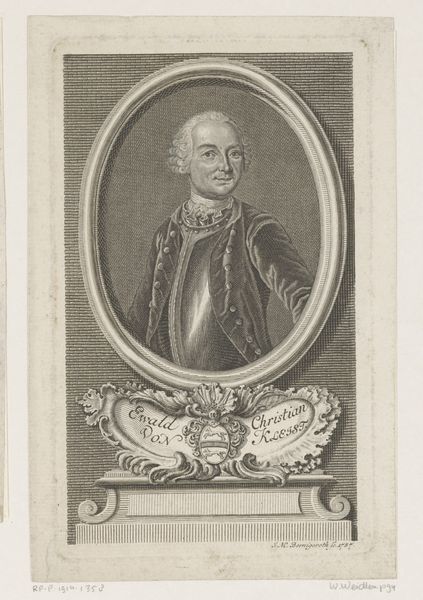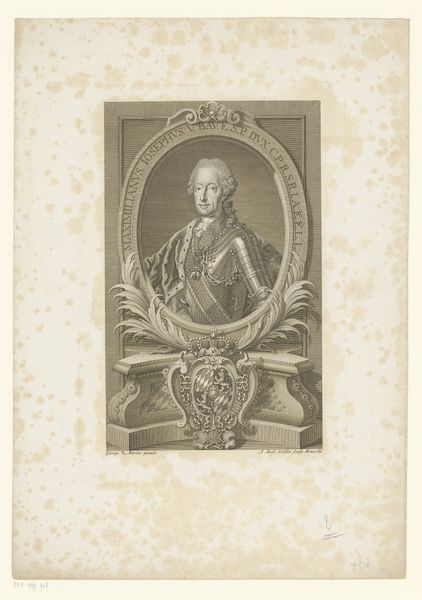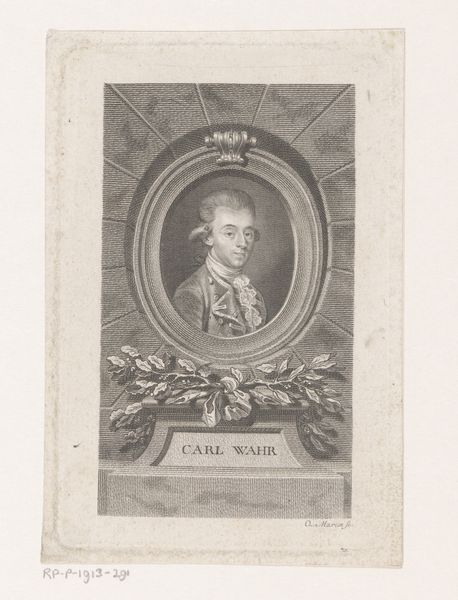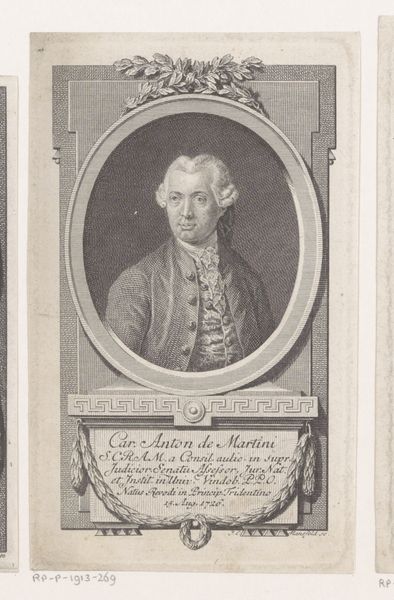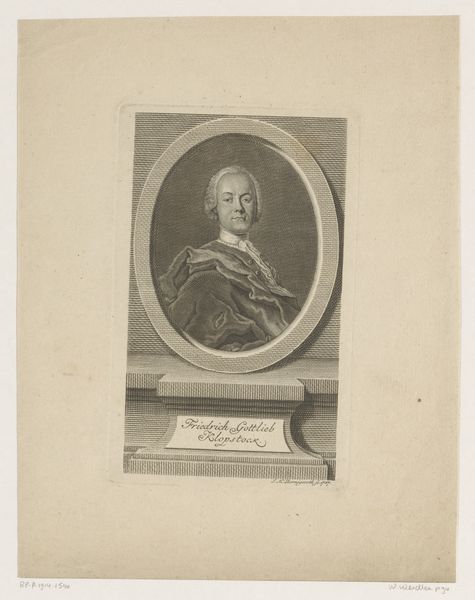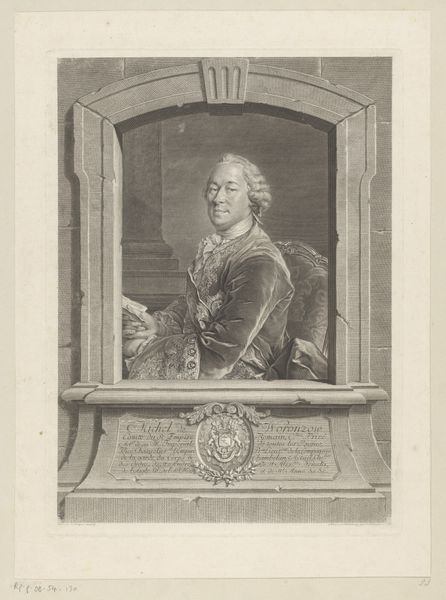
engraving
#
portrait
#
baroque
#
history-painting
#
academic-art
#
engraving
#
realism
Dimensions: height 329 mm, width 252 mm
Copyright: Rijks Museum: Open Domain
Editor: We're looking at a print titled "Portret van Karel Emanuel III, koning van Sardinië," created between 1735 and 1745 by Carlo Domenico Melini. It's an engraving. What I notice first is how the composition uses frames within frames, like the oval border and then the rectangular scene at the bottom. What strikes you most about this piece? Curator: Indeed, the framing is key. Let's observe the deployment of semiotic forms: The oval portrait above contrasts sharply with the horizontal rectangle of battle beneath. How does this layering impact our understanding of power, as it's visually represented? Is the lower battlefield purely an ornamental afterthought or a metonym of rule? Note too how realism in detailing—see the rendering of garments—serves to underscore the Baroque flamboyance surrounding the portrait itself. Editor: That's fascinating. It sounds like the form tells a story. What do you make of the empty space on the print around the portrait? Curator: That "negative space," is not truly "empty." It serves as a structured void which amplifies the portrait by its mere adjacency. Look to structuralist analysis for deeper interpretations here; observe the interplay of linear structures—garlands, vertical shafts, rectilinear frames against organic foliage and curvature of royal garments. Does Melini consciously craft visual discordance? Editor: So, the relationships between the forms and textures create meaning beyond just the literal image of the king? Curator: Precisely. Reflect on what remains unsaid by such careful curation of surfaces, textures, and formal arrangements: a complex system of signs exceeds simplistic representation! Editor: I never considered the visual language in such depth before. Thank you! Curator: A painting can always be broken down. We discover more when its language of signs can be spoken fluently.
Comments
No comments
Be the first to comment and join the conversation on the ultimate creative platform.
